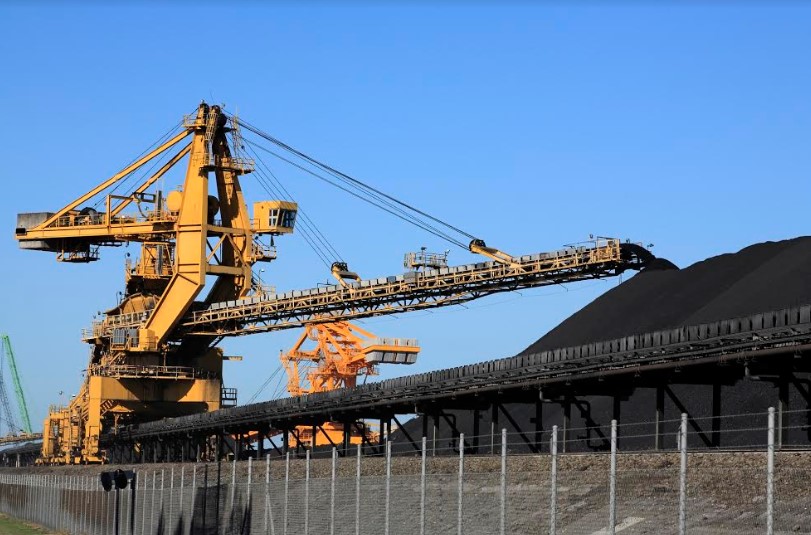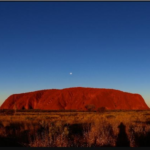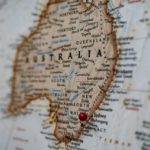Mining is one of Australia’s most productive industries. According to recent statistics, mining contributed over A$148 billion towards economic growth in 2018, which accounted for 6.4% nationally. In the same year, exports of mined resources generated $248 billion in revenue; this was a 72% share of the total export revenue that year, and a new record for the mining sector.
Mining in Australia is centuries old; over the decades, mining has attracted settlers, boosted development, and grown the economy. It has also, directly and indirectly, created job opportunities since labour and suppliers to Australian mining companies are mostly sourced locally. Let’s take an in-depth look at one of the country’s leading economic activities.
What is Mined in Australia?
Australia is a vastly wealthy region in terms of natural earth resources. The country is well known as a world producer of coal, gold, and opal. Historically, the Australian mining scene has been characterised by gold, gems, and oil rushes. Although in one way or another, the rushes set the premise for the modern mining industry, they are what most of the world make of the mining scene.
Australia produces a broad range of mineral resources, including metals, petroleum, gems, and rare earth metals. Below is a list of some of the leading commodities dug from Australian mines.
- Coal – Australia is the world’s largest exporter of coal.
- Aluminium – Australia is among China and other leading producers and exporters of bauxite and alumina.
- Gold – gold production is at an all-time high, reaching 321 tonnes in the 2018-2019 financial year.
- Opal – roughly about 95% of the world’s opal comes from Australia; this includes the precious and black opal varieties found in opal fields that lie in South Australia, New South Wales, and Queensland.
- Iron ore – production is in the range of hundreds of metric tonnes and makes up about 25% of global iron ore exports.
- Natural gas – natural gas production is on the rise, and Australia is expected to be the world-leading producer of liquefied natural gas (LNG) by 2020.
- Petroleum – Australia produces an average of about 286 barrels of crude oil per day, most of which comes from the western region.
- Nickel – In 2015, Australia produced 9% of the world’s nickel output, making it the fourth-largest producer of nickel at the time.
- Uranium – Australia has nearly a third of the world’s uranium deposits. The country is currently the world’s third-largest producer of uranium behind Canada and Kazakhstan.
- Diamond – Australia has one of the world’s largest deposits of commercially viable diamond, mostly in the East Kimberley regions and the Argyle mine.
Australia also produces significant amounts of zinc, lead, copper, silica, silver, and rare earth elements such as yttrium oxide and rare earth oxide. Iron ore currently leads in Australian exports, followed by coal, gold and petroleum gas.
Australian Mining Companies
Currently, there are hundreds of operational mines and quarries in the country, although not every single mine is run by an independent miner, there are still dozens of companies working these mines. Many of these companies are locally based in the country, while others are international miners.
Three of the largest mining companies in Australia and indeed the world are Rio Tinto, BHP Billiton, and South 32. The government and financial experts observe the performance of large mining firms such as these to identify trends in the industry and international mineral markets.
Rio Tinto
Founded in 1873, Rio Tinto has risen to a multinational mining corporation. The company is among the world-leading commodity dealers in diamond, aluminium, copper, gold, iron ore, uranium and other resources. Being the third-largest mining company in the world, in 2018, Rio Tinto generated more than $40 billion in revenue.
BHP
The BHP company, formally known as BHP Billiton, is a dual-listed multinational public company conducting mining activities in Australia. Its HQ in Melbourne Australia. According to the ASX index, BHP is the second largest company in the country with a market capitalisation of over $97 billion. The company specialises in metal ores (gold, copper, and iron), and also coal and petroleum.
South 32
South 32 is a relatively new entry into the mining scene, having span off from BHP in May of 2015 to peruse independent ventures. The company is based in Perth, West Australia. South 32’s main focus products are metal commodities such as iron, copper, manganese, aluminium, lead, nickel, and zinc. In 2015, the company made nearly $7 billion in revenue and is now listed on the ASX as the third-largest mining firm in Australia.
Largest Mines in Australia
The latest available figures (2016), show that there were 370 mining sites spread out across the country. Some of the largest mines (in no particular order) include:
Boddington Gold Mine
Located in West Australia, south-east of Perth, it’s the largest gold mine in the country. In 2018, this site produced 20.1 tonnes of gold and 35,000 tonnes of copper.
The Argyle diamond mine
Located in the northern region of West Australia, the Argyle mine is one of the world’s largest producer of diamonds by volume. The average annual production volume is about 1,600 kg, summing up pink diamonds, rare blue diamonds, champagne, and cognac diamonds.
Olympic Dam Metal Mine
Run by BHP in South Australia, the Olympic Dam mine has some of the richest metal deposits in the world, (about 154 million tonnes of proven reserves). The mine churns out high volumes of copper, gold, and uranium.
Fimiston
Also known as the Super Pit Mine, Fimiston is one of Australia’s largest open-pit gold mines. Located in south-east Kalgoorlie, Western Australia, some of its pits cover areas larger than 5 square kilometres and are as deep as 700 meters. Since 1989, the mine has produced over 16 million ounces of gold.
Cannington Lead and Silver Mine
This is one of the world’s largest source of silver. The underground mine is located in north-west Queensland, southwest of Mt Isa. The site is owned and ran by South 32 and features some interesting eco-friendly approaches to mining, including solar power harvesting and emissions control.
Conclusion
Australia has a vast and extraordinary wealth of natural resources lurking beneath the surface. Luckily, large organisations and the government as well are at the forefront of ensuring that these resources benefit the Australian economy and its citizens. And not only that, but mining has also fuelled the global economy in many ways, such as providing raw materials for various industries and facilitating international trade and relations.
Related Posts
Hi there! I’m Sethu, your go-to guy for all things tech, travel, internet, movies, and business tips. I love sharing insights and stories that make life more interesting. Let’s explore the world together, one article at a time!











